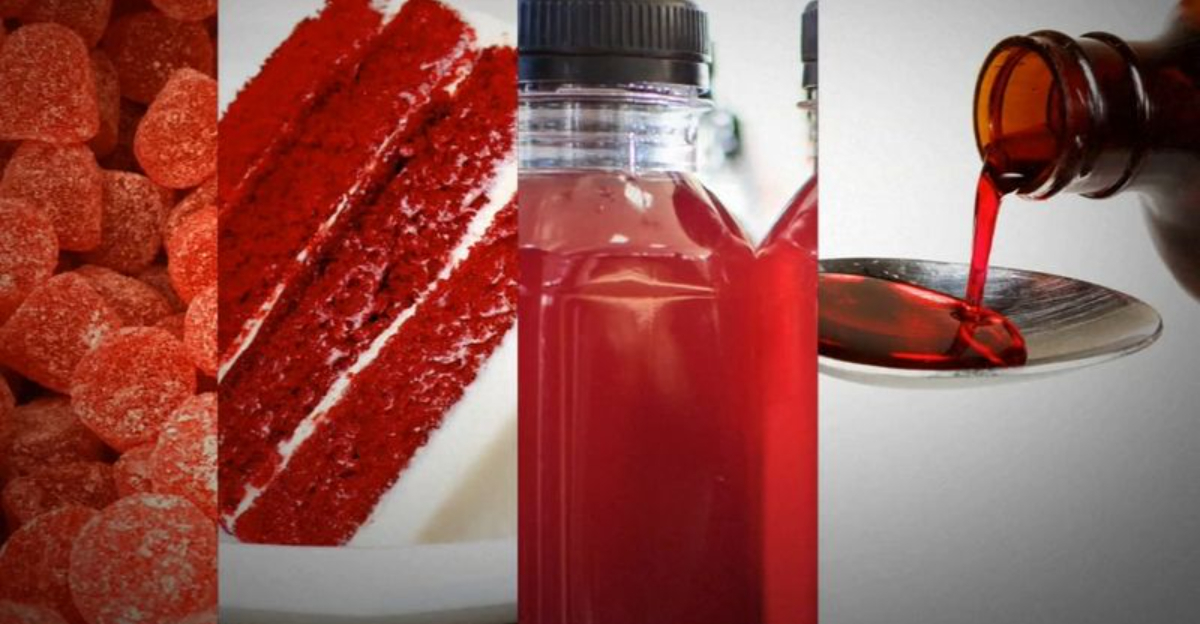14 Ingredients Once Used In Cooking That Are Now Banned All Over The World

There was a time when your kitchen cabinets would’ve been stocked with ingredients that chefs swore by for decades. But as health concerns grew, scientific research advanced, and safety standards evolved, many of those pantry staples disappeared.
Colorful dyes, chemical preservatives, and other once-common additives are now banned in many parts of the world as we better understand their impact on our health.
1. Potassium Bromate: The Bread Booster
Bakers once swore by this flour-strengthening agent that made dough rise beautifully and created that perfect texture in your sandwich bread.
Though still legal in the United States, over 100 countries, including the European Union, China, Canada, and Brazil, have slammed their doors on this additive.
Why? Studies linked it to kidney and thyroid cancers in laboratory animals, earning it a ‘possible human carcinogen’ classification.
2. Brominated Vegetable Oil: The Soda Stabilizer
Remember when your citrus sodas maintained their flavor distribution perfectly? Thank BVO for that magic trick.
This patented emulsifier kept citrus flavors from separating in popular drinks like Mountain Dew for decades. Recently booted from American shelves (FDA banned it in August 2024), it’s long been prohibited across Europe, Japan, and India.
The chemical shares components with flame retardants and accumulates in body tissues, potentially causing thyroid problems and neurological harm.
3. Azodicarbonamide: The Yoga Mat Chemical
Food scientists nicknamed this one the ‘dough conditioner’ for its ability to create fluffy, consistent bread products.
The scandal broke when consumers discovered this chemical also appears in yoga mats and plastic products. Subway famously purged it from their bread formula in 2014 after public outcry.
Exposure can trigger asthma and respiratory issues, which prompted the European Union and Australia to ban it completely from food production.
4. Titanium Dioxide: The Whitening Wonder
Candy makers adored this powdery substance for creating brilliant whites in everything from powdered donuts to the coating on M&Ms.
Titanium dioxide gave foods that perfect snowy appearance without affecting flavor. The European Food Safety Authority dropped the hammer in 2022, banning it after research suggested it damages DNA and potentially causes precancerous lesions.
Manufacturers worldwide scramble to reformulate products as other countries consider similar restrictions.
5. BHA & BHT: The Shelf-Life Extenders
Cereal wouldn’t stay fresh for months without these preservation powerhouses keeping those flakes crispy.
These synthetic antioxidants prevented oils in foods from turning rancid, extending shelf life dramatically. Your childhood breakfast cereals, potato chips, and packaged baked goods relied on them heavily.
The European Union restricts both compounds due to evidence they disrupt hormones and cause cancer in laboratory animals. Many manufacturers now use rosemary extract as a natural alternative.
6. rBST: The Milk Multiplier
Dairy farmers once injected cows with this synthetic hormone to boost milk production by up to 20%. It was a financial game-changer for the industry.
While technically not an ingredient itself, rBST leaves traces in milk products. Canada and all European Union countries banned its use due to increased mastitis infections in cows and potential health concerns for humans.
Many American dairy products now proudly advertise being ‘rBST-free’ despite the FDA’s continued approval of the hormone.
7. Red Dye #3: The Cherry Colorant
Maraschino cherries got their vibrant glow from this synthetic colorant that brightened everything from popsicles to cake decorations.
Originally derived from coal tar, this artificial dye created eye-catching reds in candies and processed foods. The FDA partially banned it for cosmetics in 1990 after research linked it to thyroid tumors in lab rats.
California recently banned Red 3 completely, joining the European Union’s long-standing prohibition. Food manufacturers now use beetroot and other natural alternatives.
8. Propylparaben: The Bakery Preservative
Muffins and cakes stayed mold-free for weeks thanks to this chemical defender against microscopic invaders.
This antimicrobial compound prevents fuzzy green spots from ruining your favorite bakery treats. Europe banned propylparaben in 2006 after discovering its potential to mimic estrogen in the body.
Scientists worry about its ability to disrupt hormonal balance, potentially affecting reproductive development. Natural alternatives like potassium sorbate now keep commercial baked goods fresh instead.
9. Diphenylamine: The Apple Protector
Grocery store apples maintained their picture-perfect appearance for months because of this post-harvest treatment.
Farmers applied DPA to prevent ‘storage scald’ – those brown spots that appear on apples during long-term storage. The European Union banned it in 2012 after scientists couldn’t prove it didn’t break down into cancer-causing nitrosamines.
Japan and Canada followed with similar restrictions, forcing apple producers to develop alternative storage methods or accept shorter shelf lives for exported fruit.
10. Olestra: The Fat-Free Faker
Snack lovers briefly rejoiced when this revolutionary fat substitute delivered guilt-free potato chips in the 1990s.
Marketed under the brand name Olean®, this synthetic compound gave foods the taste and mouthfeel of fat without the calories. The celebration ended quickly when consumers reported embarrassing digestive side effects dubbed ‘anal leakage’ on product warning labels.
The United Kingdom and European Union banned Olestra outright in 1999. Even in America, where it remains approved, most manufacturers have abandoned it.
11. Unlabeled GMOs: The Stealth Ingredients
Genetically modified crops quietly entered our food supply, with Americans often unaware they were consuming them.
While not technically banned worldwide, over 64 countries require clear labeling of GMO ingredients, effectively restricting their use. The EU, Russia, and China lead with strict labeling laws and outright bans on certain modifications.
Controversy centers around potential environmental impacts and unknown long-term health effects. Many food producers now voluntarily label their products ‘Non-GMO’ to satisfy consumer demand for transparency.
12. Ractopamine: The Livestock Leaner
Farmers once boosted profits by feeding this drug to pigs and cattle, producing leaner meat with less feed.
This beta-agonist drug redirects nutrients to build muscle instead of fat in livestock. More than 160 countries have slammed the door on meat produced with ractopamine, including major markets like China, Russia, and the entire European Union.
Concerns include potential cardiovascular effects in humans and documented health problems in animals. American meat producers now maintain separate ractopamine-free herds specifically for export markets.
13. Arsenic-Based Additives: The Toxic Enhancers
Poultry farmers once added arsenic compounds to chicken feed for faster growth and pinker meat coloration.
Yes, that arsenic (the notorious poison) was deliberately added to animal feed in small amounts for decades. The FDA finally banned the practice in 2015 after studies showed inorganic arsenic could accumulate in chicken meat.
The European Union prohibited these additives much earlier due to cancer concerns. Modern poultry production now relies on improved breeding and nutrition rather than arsenical compounds.
14. Potassium Iodate: The Dough Improver
Bakers once counted on this powerful oxidizing agent to strengthen dough and improve bread texture.
Unlike its cousin, potassium bromate, this compound works instantly rather than during baking. The European Union and China banned it due to concerns about excess iodine consumption potentially disrupting thyroid function.
Many countries still permit its use in regions with iodine deficiency, where the added iodine provides health benefits. Modern bakeries increasingly use enzymes and ascorbic acid as safer alternatives.
